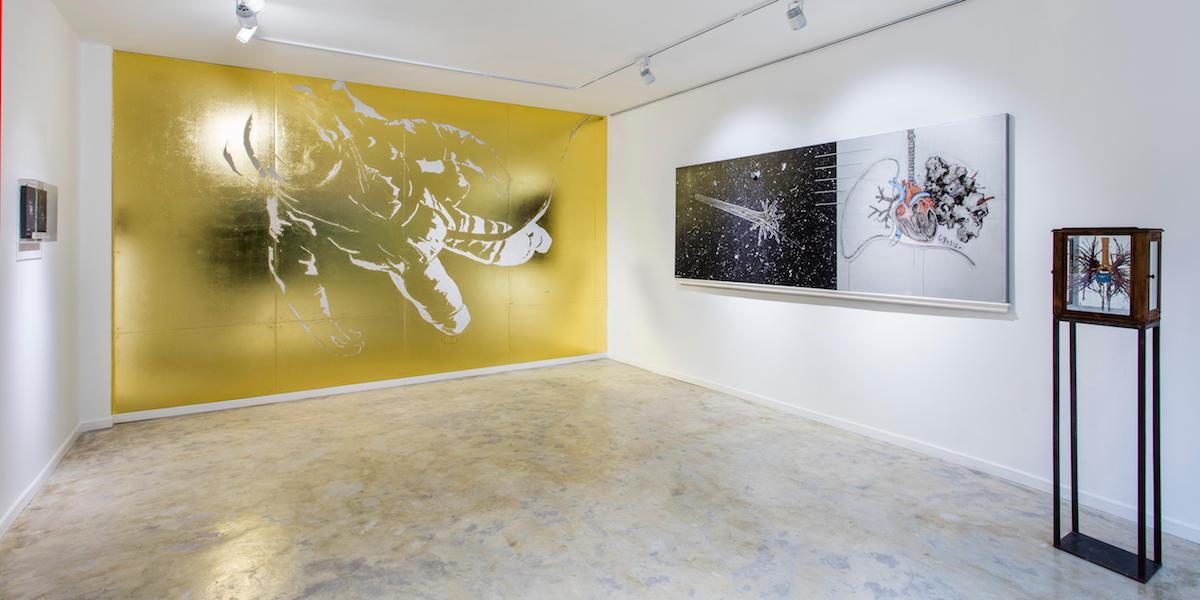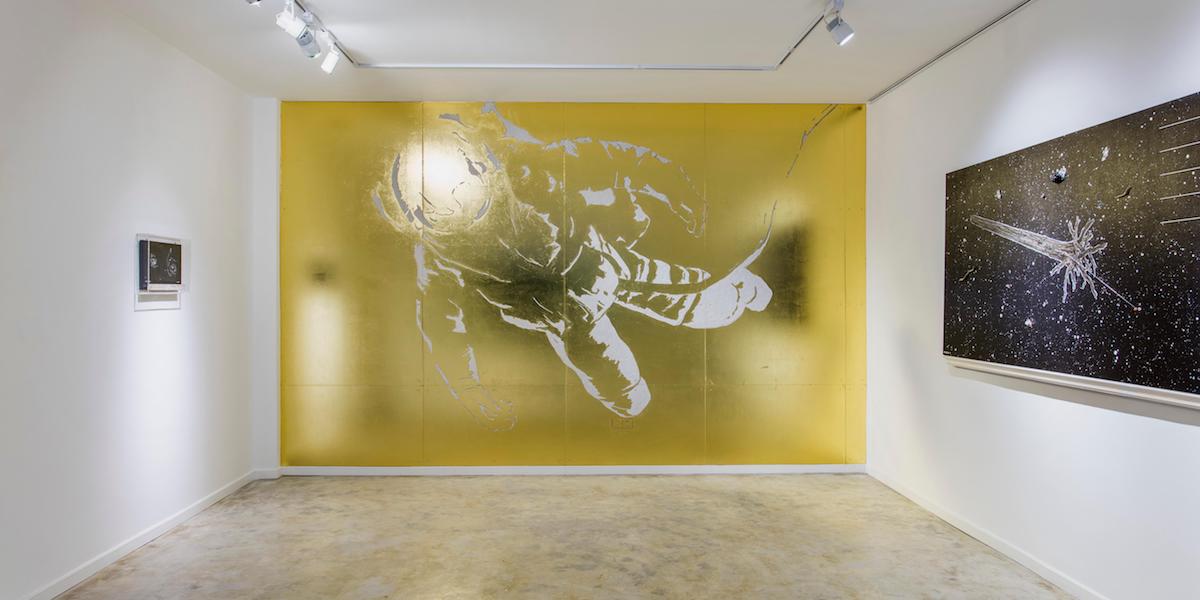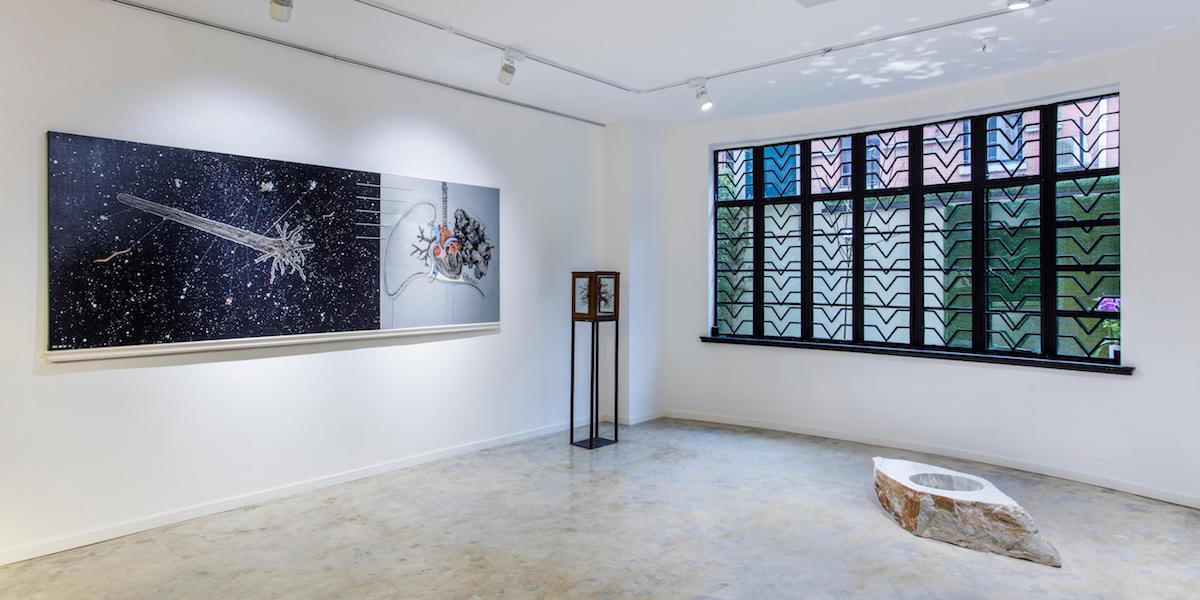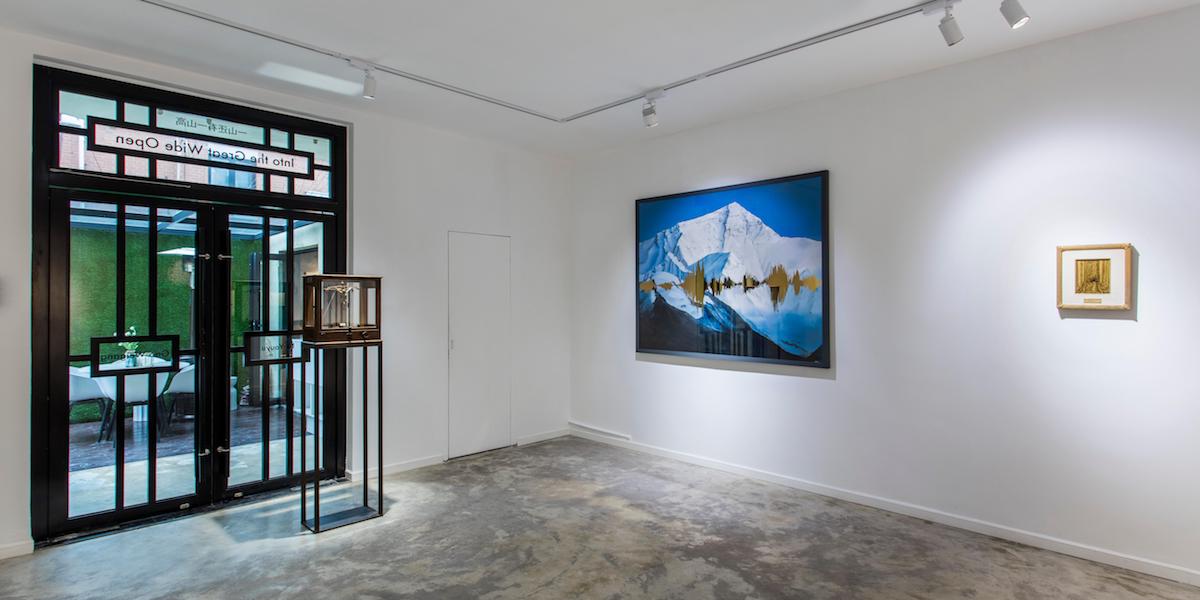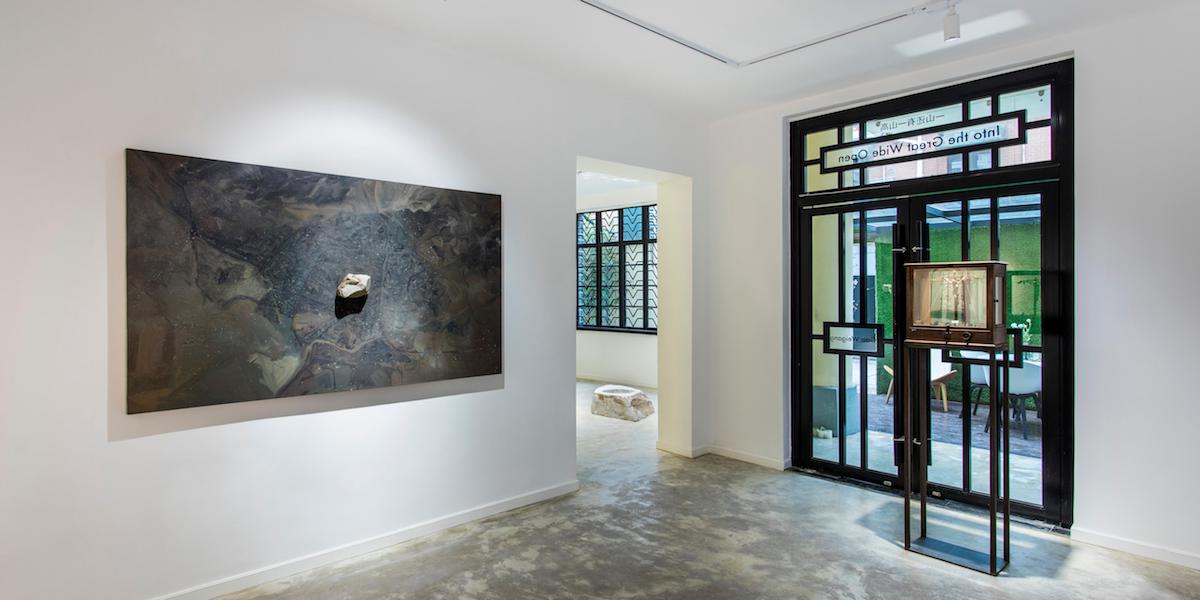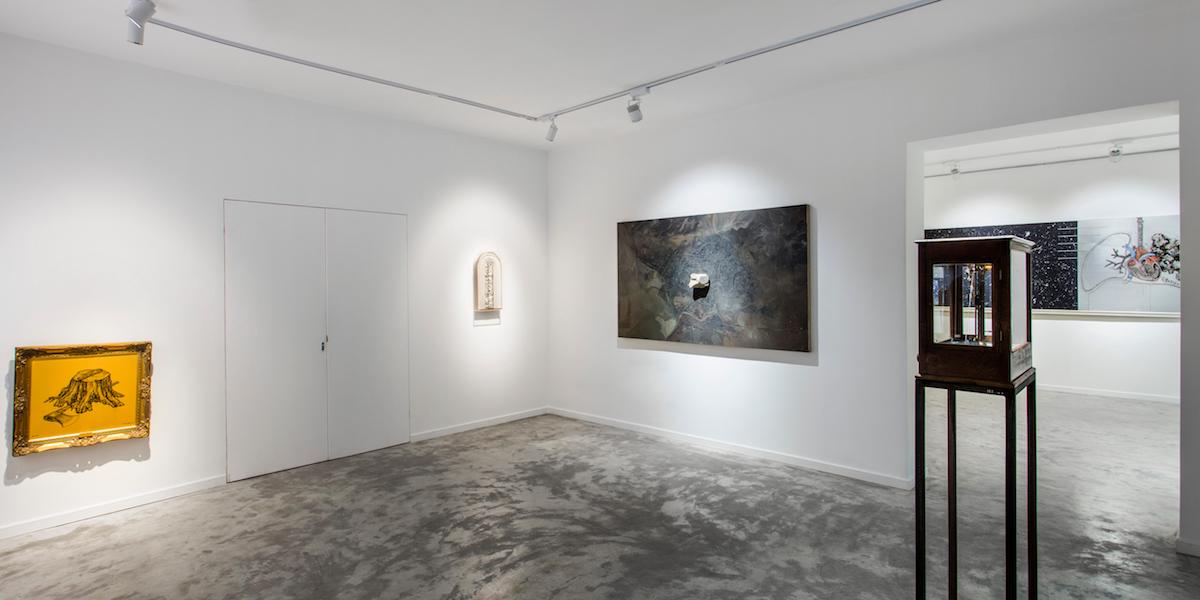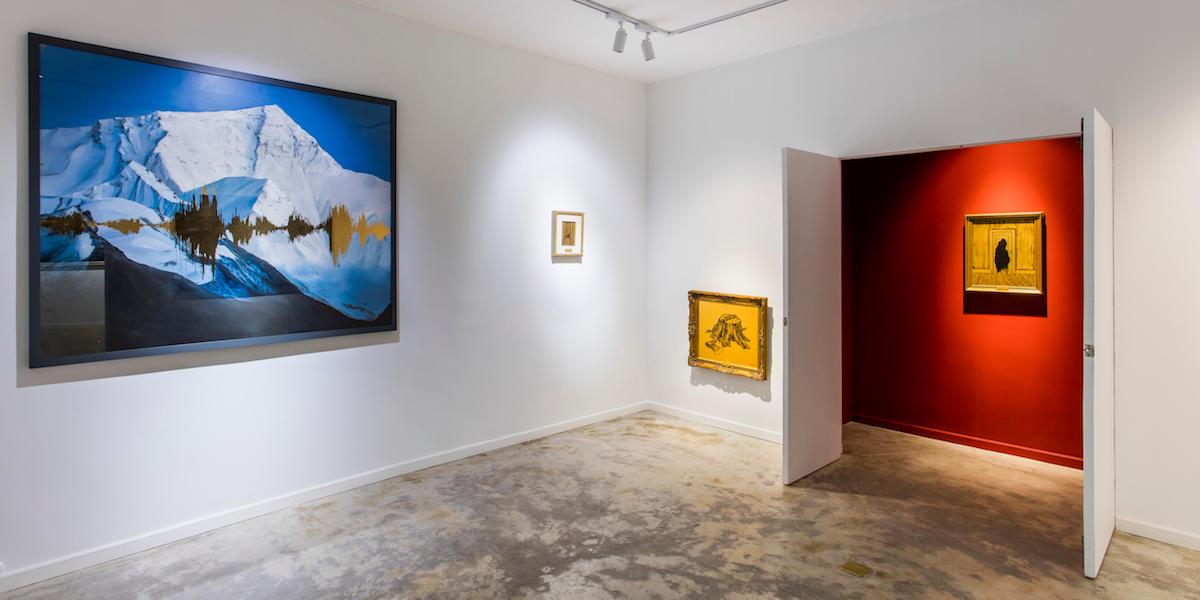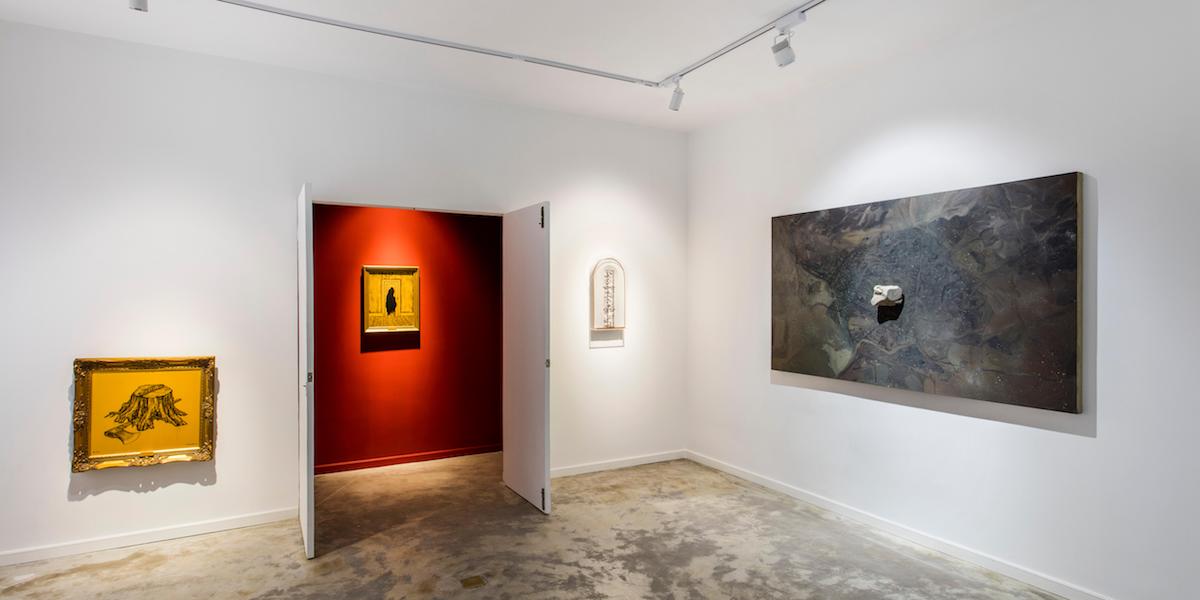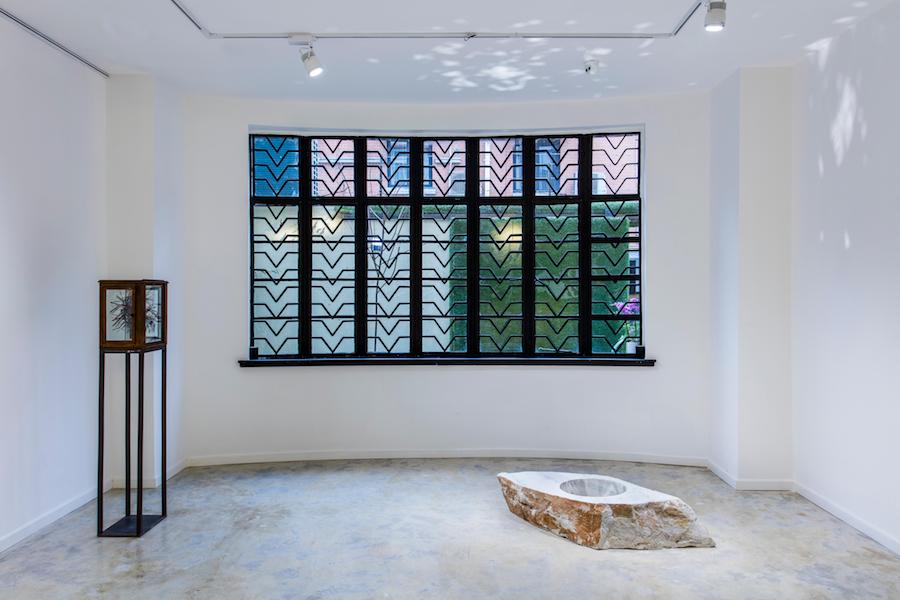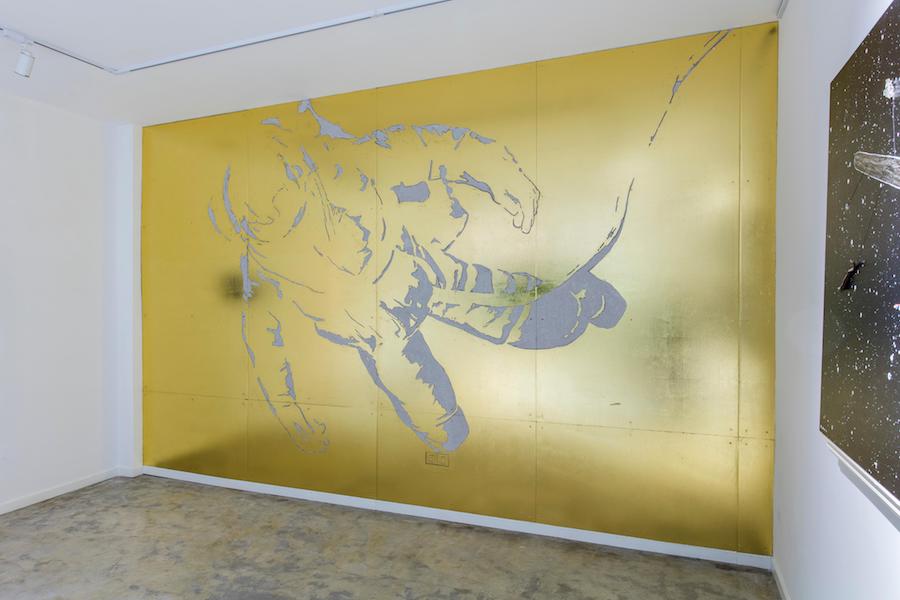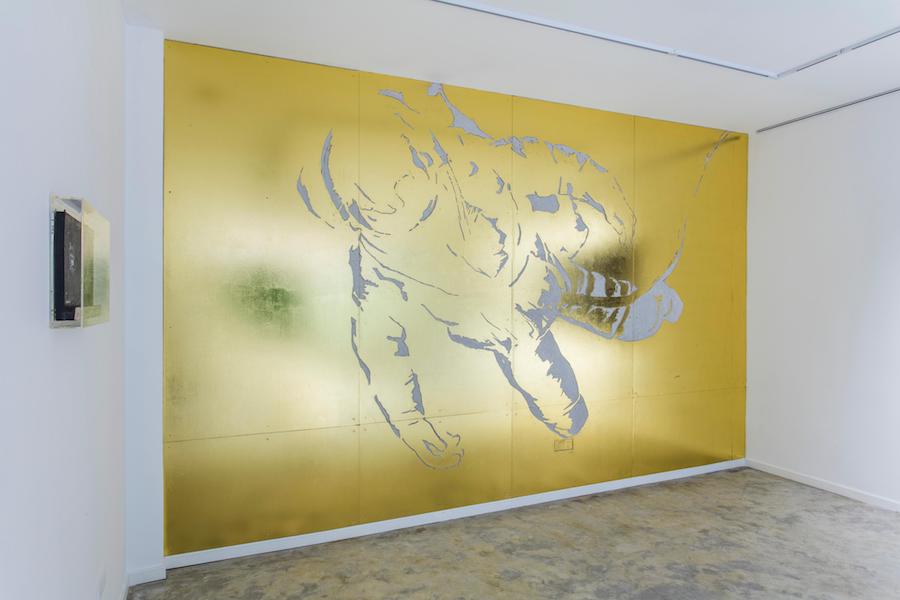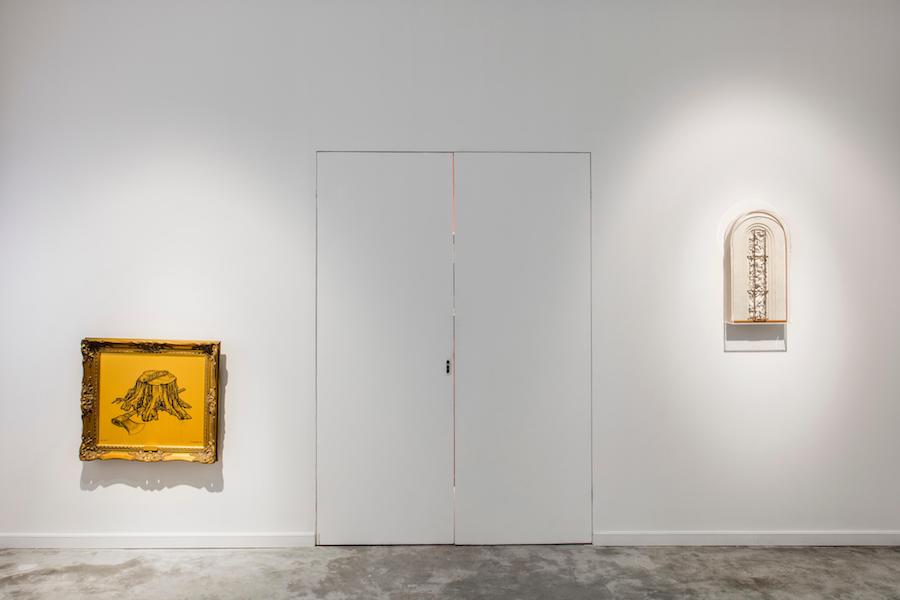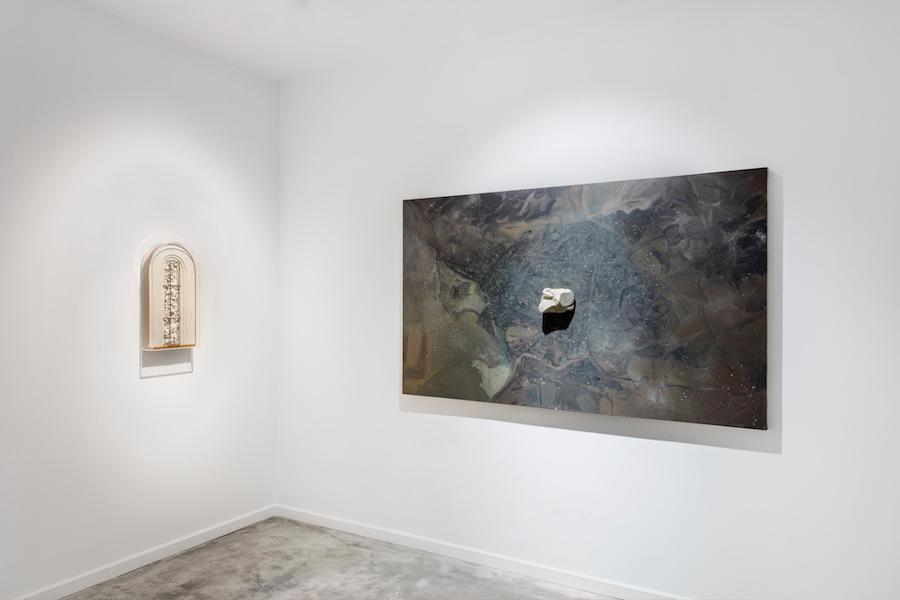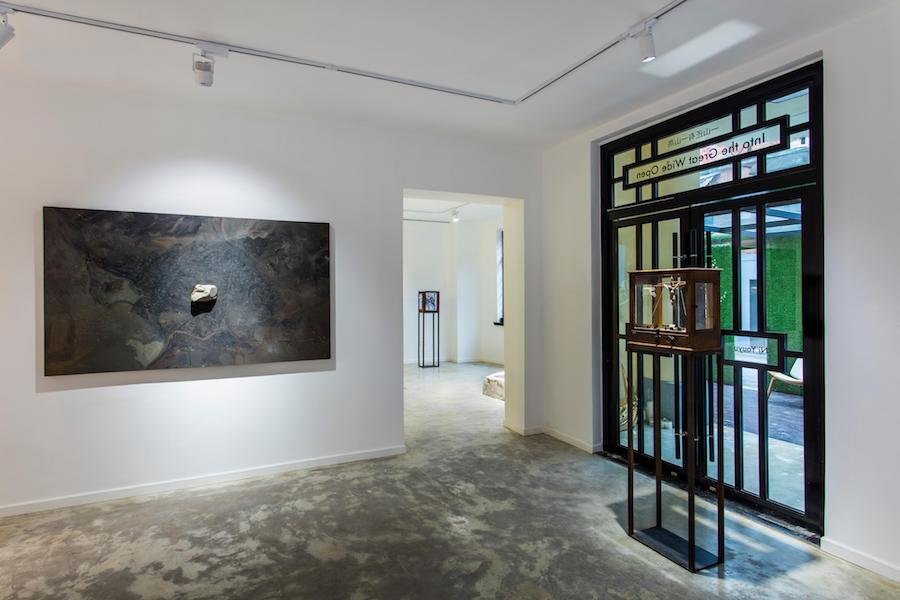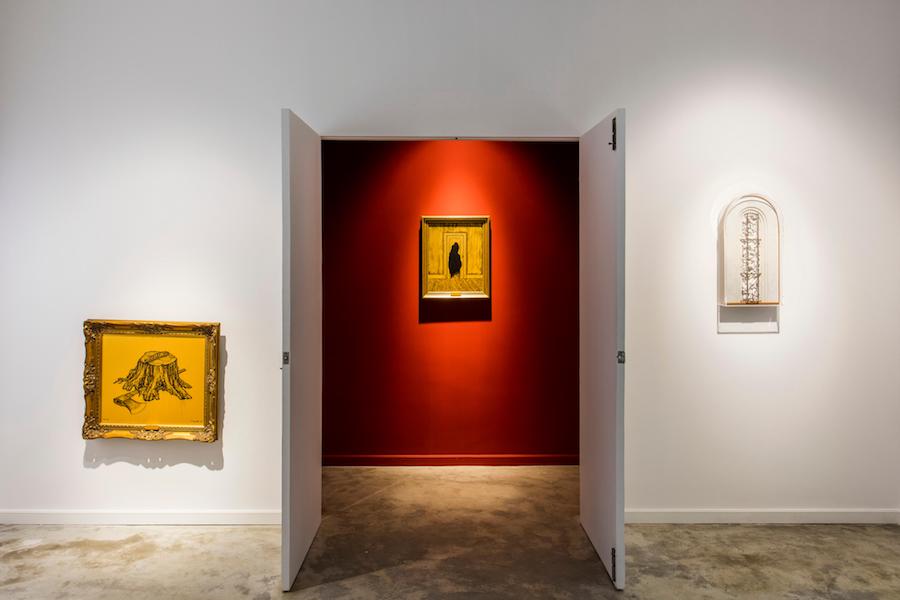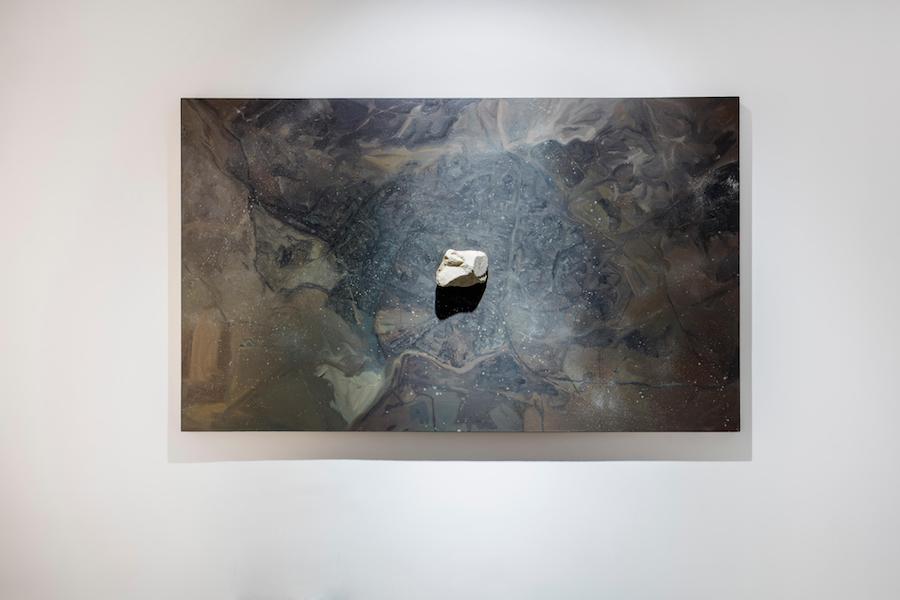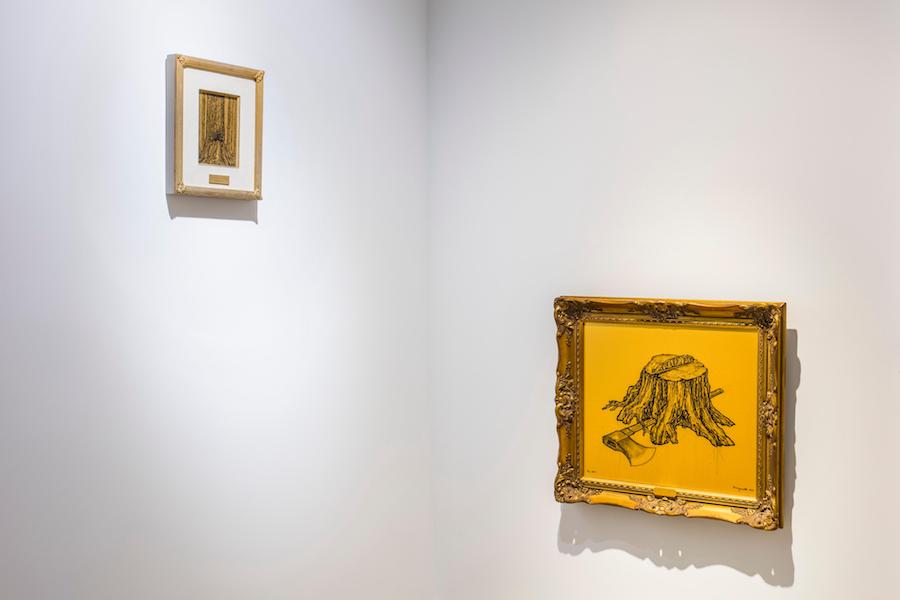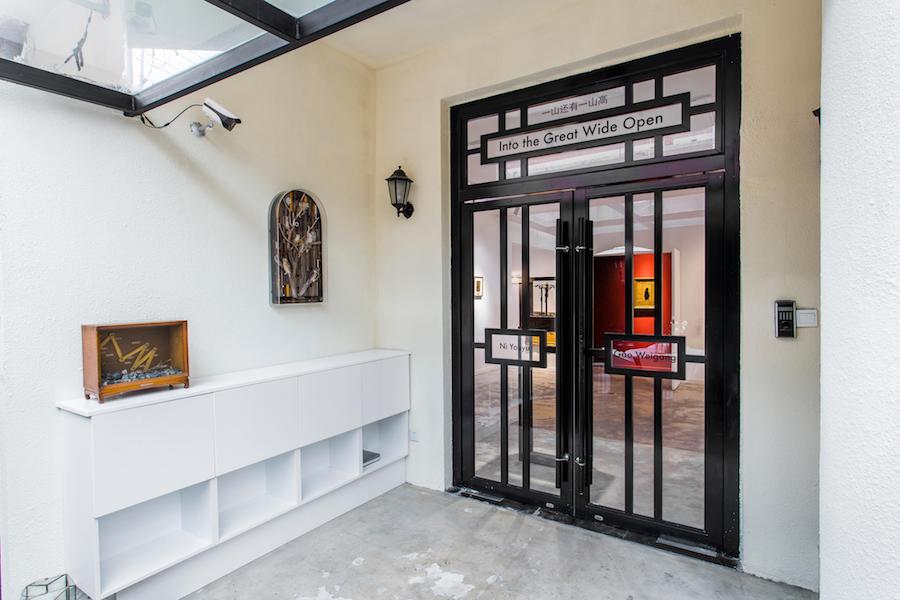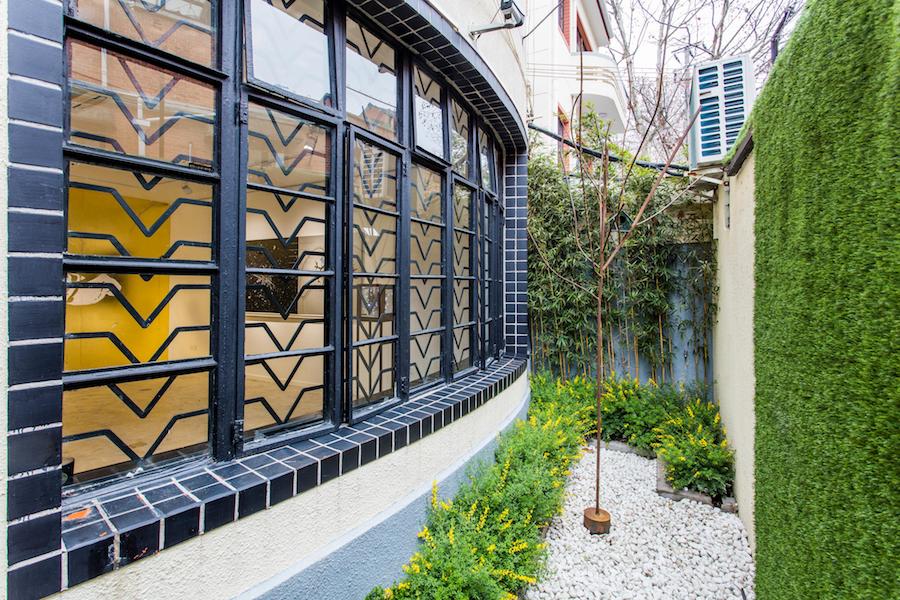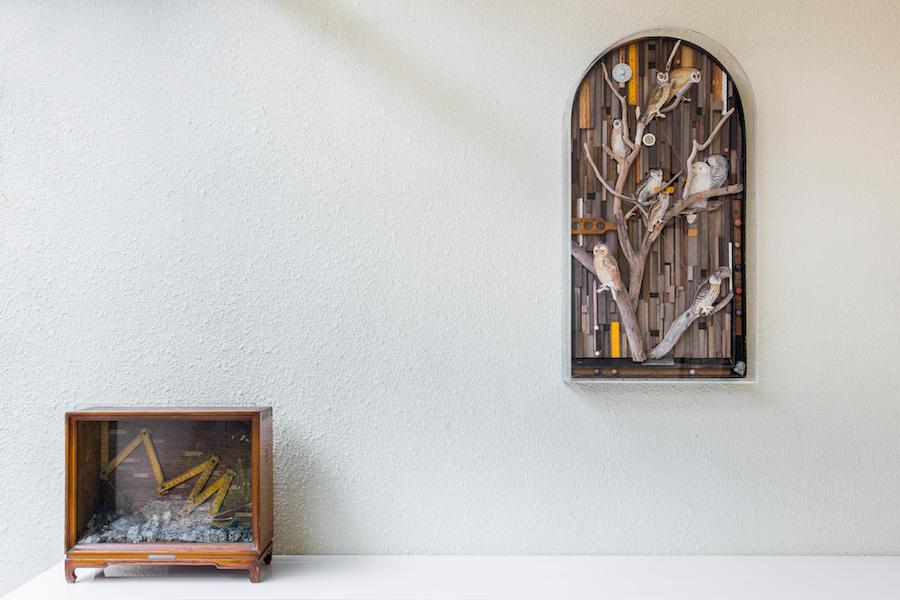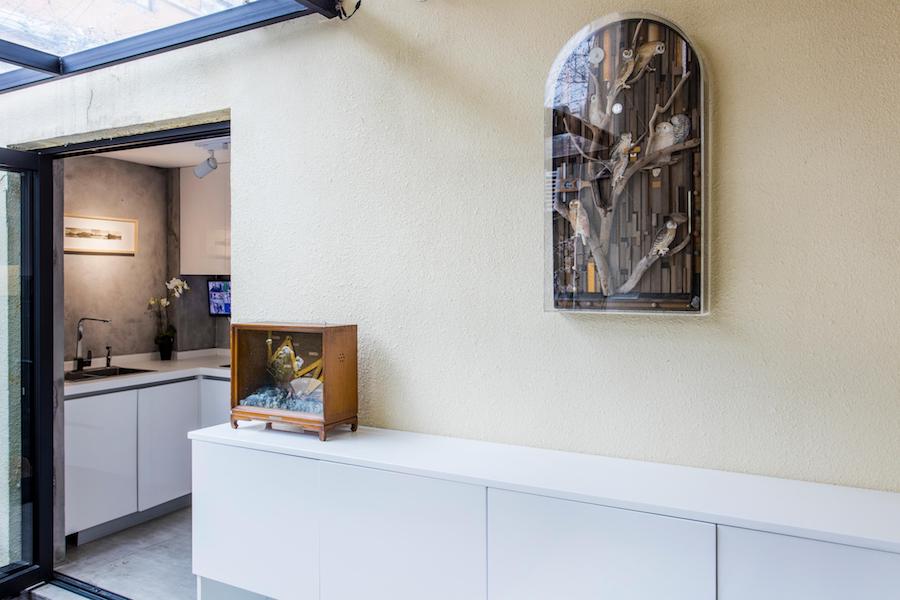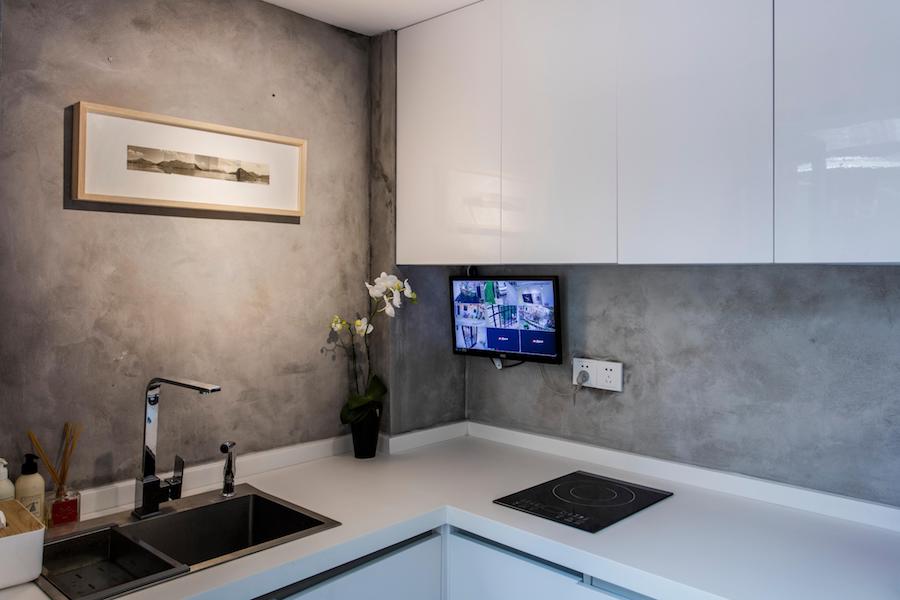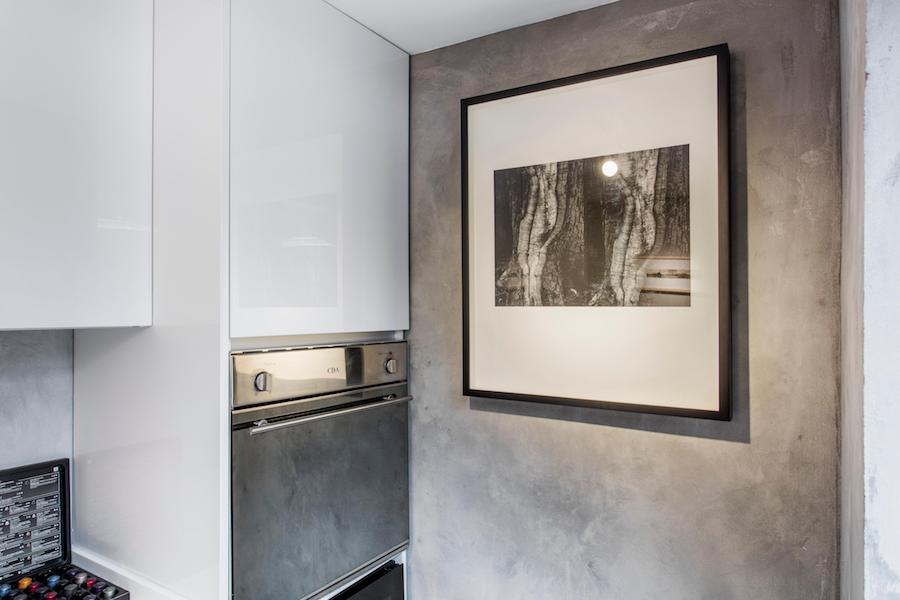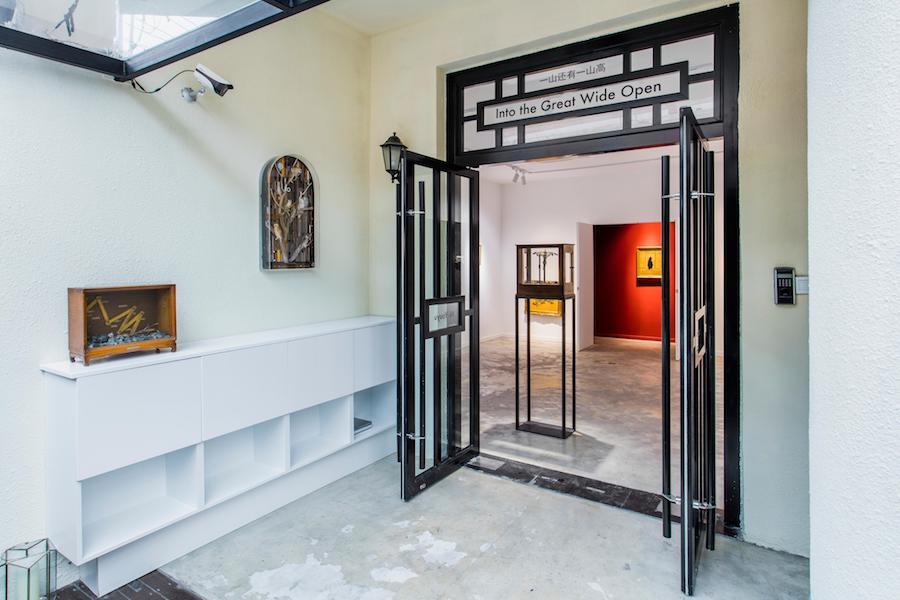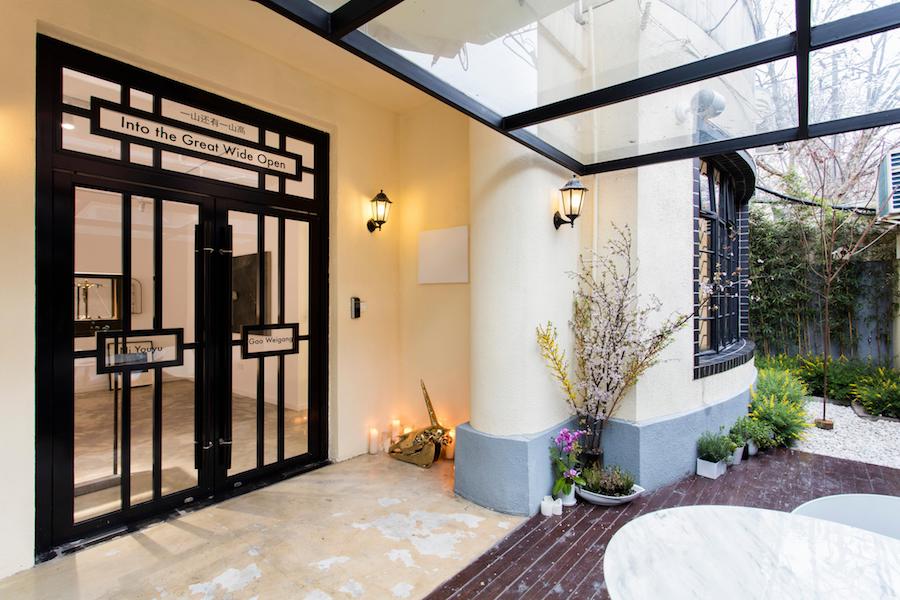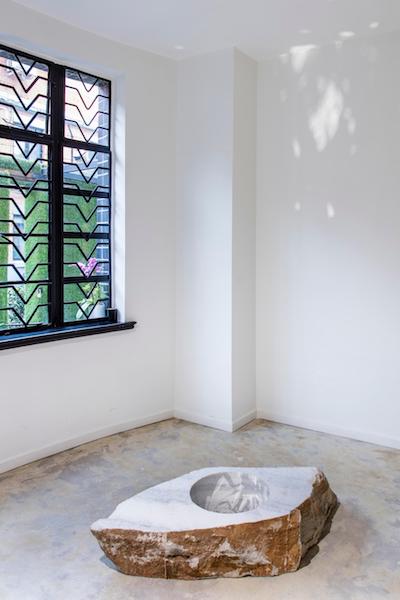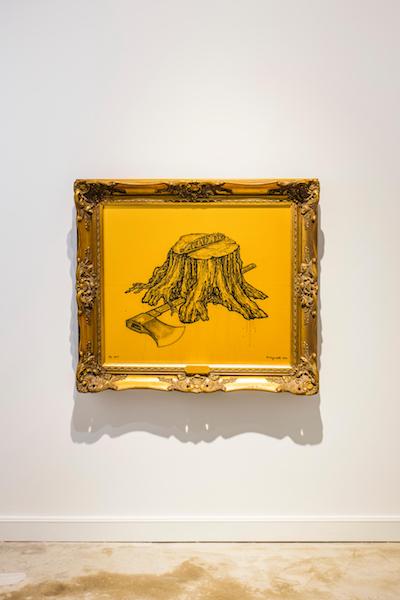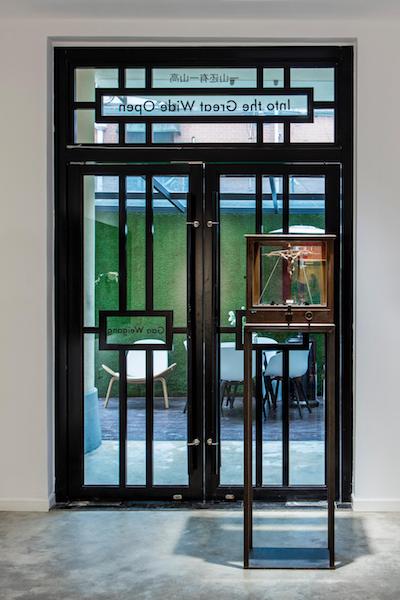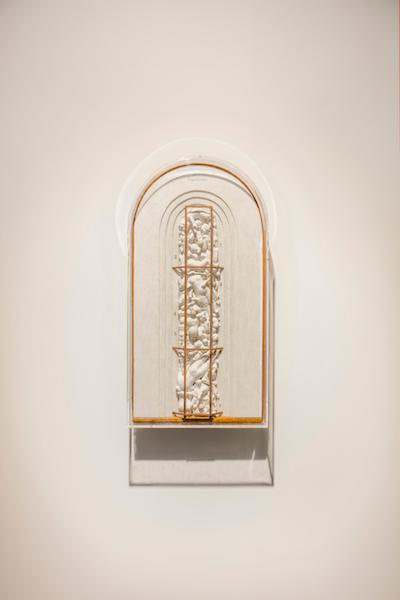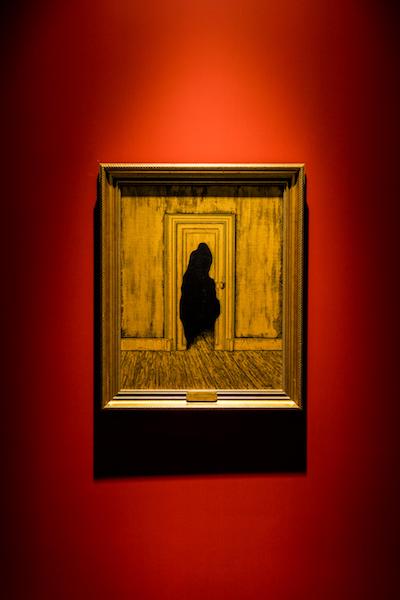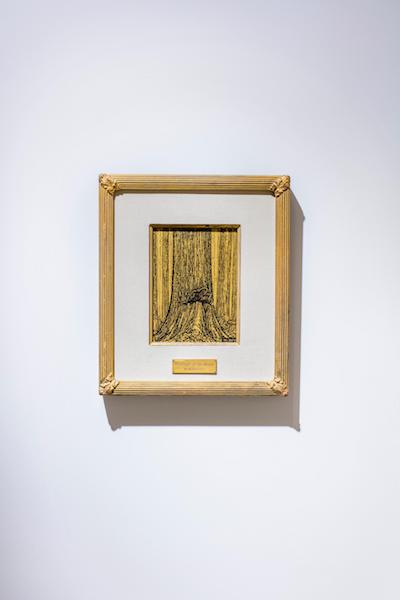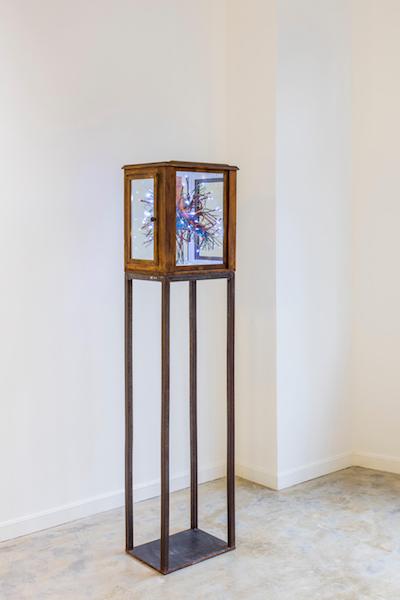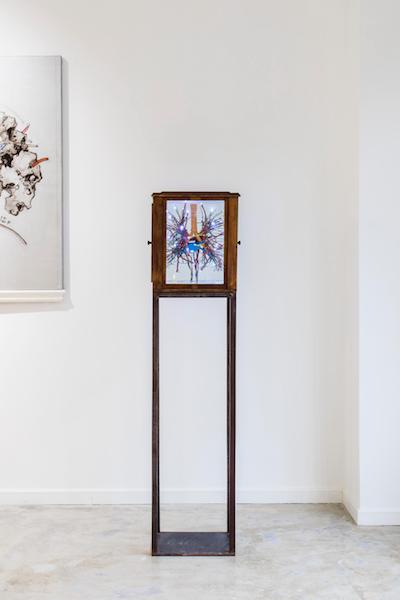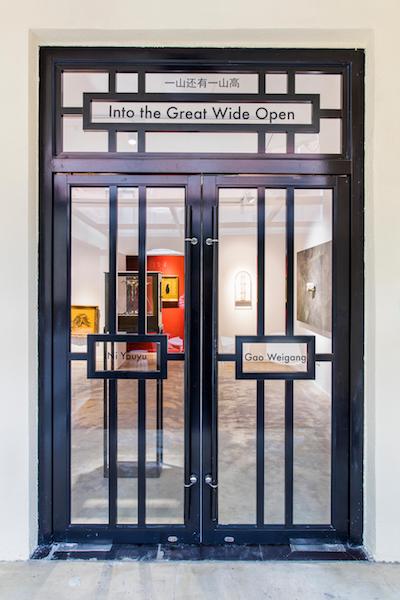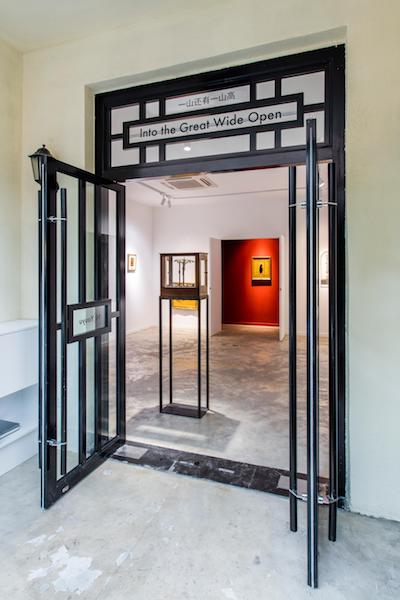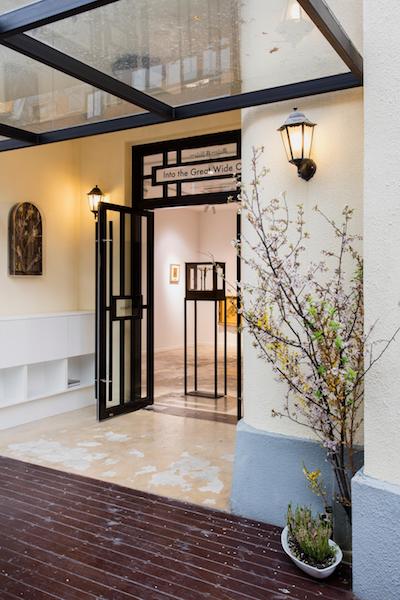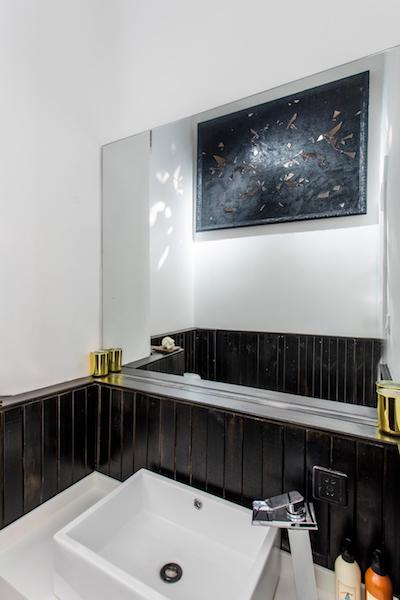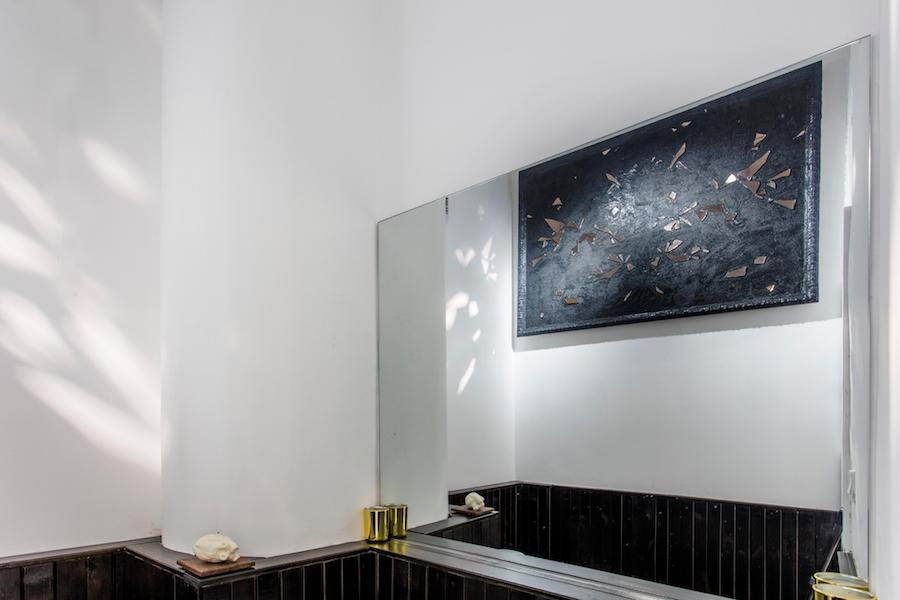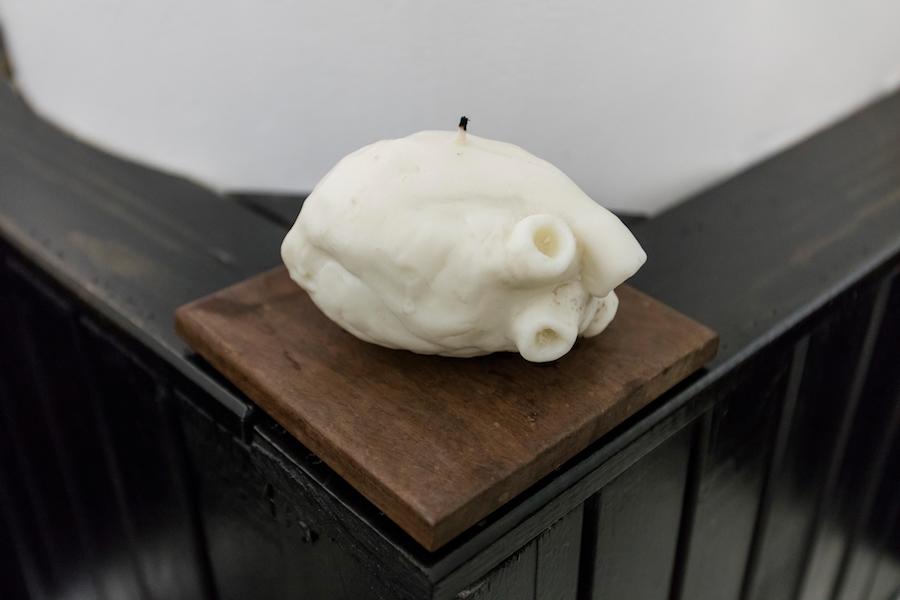In “Into the Great Wide Open” the late Tom Petty describes a hegemon in the fog of post war hubris as “a rebel without a clue”. Far better attuned than Petty’s erstwhile hegemon to the reality that one woman’s illusion is another’s truth Gao Weigang and Ni Youyu touch upon themes of nature and her fractious relationship with mankind and then dangle the offer of an exit into the wide-open universe (real and illusory) both internal and external to ourselves.
The exhibition explores dualities such as myth and religion; representation and illusion; and the living and the inanimate and the shifting conflict and coalescence between them. It is a lively combination and conversation among works that are very different from each other and yet share certain affinities, characteristics and conditions. Through this ongoing exchange the artists offer a glimpse into the prison perception and its various escape routes.
Throughout his career, Gao Weigang has employed various materials and scales, and he has traversed from the three-dimensional to two and back. But his fundamental interests remain constant, as his collection of works in this exhibition demonstrates to majestic effect. For the artist, there is great potential in works achieving a sort of oscillation between perception and representation, as shapers of experience arise in the nature of the spectator.
In the exhibition, Gao alludes to the concept of mimesis, understood as an imitative representation of reality, and walks the line between austerity and farce in simulacra of the natural through issues of public conformity, representational nature and its identities. While encompassing strategies to cross the threshold between the visible and the invisible, the artist has produced an outdoor sculptural installation, heart-shaped candles and a mural intervention that resembles a pictorial deconstruction of a familiar image of the spaceman.
The function and strength of Gao’s paintings depend on the viewer making both subtle and explicit connections of an imagined world that is long on atmosphere with recurring obvious particulars such as the physical elements he adds to his canvases, most often, rocks. Exemplified in series such as Echo and the Struggler and the painting Jerusalem, the artist begins to address contested sites and subjects through known locations and places while encompassing the traces of humanity and nature. Thus, the paintings – most of which still feature an uncanny intensity of voided visage – reveal the cultural layer of places.
The span of Ni Youyu’s artistic practice – which deploys everything from art and ideas of collage to a heightened methodology between labor and painterliness, as well as draws attention to the formal qualities of the natural system, particularly, zooming into the galaxy – draws heavily upon the exploration of subject and medium, often in relation to perceiving nature imbued with time and space.
A taxonomic collector of characteristic things such as those found in nature and assortments of artifacts, Ni reconstructs everyday objects into his own cosmological worldview. Whether created within old wooden pinball machines, where raw materials are turned and twisted into varied configurations, or his photographic collages involving past cut-out pictures arranged into carefully sequential impressions, these works seem to create a cumulative insight and flow of their own. There are also revisits of art historical references by the artist. Ni produces golden paintings of trees in their natural habitats with a few works appropriated as optical homages to Belgian surrealist Rene Magritte. The dreamlike works’ tricky play of flatness and depth is a reminder of the fallibility of perception. More than mirrors held up to our own world or windows into other galaxies, Floating Wood 2, which depicts a wrinkled log floating in space alongside the arterial system of the heart, is a form of mediated construction itself. It is a unified pictorial that alludes to reaching out with the experience of being alive in our modern world and, perhaps, also beyond our constellation.
Land, sea and sky are recurring motifs in the artists’ works. With no prescribed route in the exhibition, sculptures and installations as site-specific facades, paintings with their differences and familiarities in kind and rhythm, and the artworks encompassing their respective displacements and disguises, the mounting and viewing experience is a rich accumulation of associative reference, becoming a kind of lexicon of cultural materiality, identity and experience, which plots out a vivid landscape. Faced with this vision of a garish, hyperventilating, late-capitalist culture in the current societies of today, we are forced to consider how it forms us – our histories, our environment, our identities, our governances and our interactions. Though the same questions come up again and again, this exhibition switches you on and brings you right into a continuous present, as this generous and definitive show makes clear.
About the Artists
Gao Weigang employs a wide range of media and materials in his practice, reflecting his intention of challenging mainstream visual culture through questioning the apparatus of common knowledge and perception. Born in Heilongjiang province, China in 1976, Gao graduated from the Tianjin Academy of Fine Arts, where he majored in oil painting. He currently lives and works in Beijing. His works have been widely exhibited across Mainland China, as well as in Hong Kong, Singapore, London, and New York City, and have been collected by many art institutions/foundations with worldwide reputation such as The Burger Collection, Hong Kong; DSL Collection, Paris, France; Long Museum, Shanghai, China; White Rabbit Collection, Sydney, Australia; Yuz Museum, Jakarta, Indonesia; and Louis Vuitton Group, Hong Kong, among others. He lives and works in Beijing.
Ni Youyu has used a range of materials, including wooden boxes, ceramics, and paint, and produced installations exploring the interrelationship between humankind, nature and the universe, which is a common theme in classical Chinese landscape painting. He graduated from the Fine Art College of Shanghai University and was named Best Young Artist in the 2014 Chinese Contemporary Art Awards. He is interested in the materiality of objects and the reinterpretation of traditions and conventions in art. Ni’s works have been shown at the Bern Art Museum (Switzerland, 2016), Museum of Art Lucerne (Switzerland, 2011), Gwangju Museum of Art (South Korea, 2012), Museum of Contemporary Art (Taipei, 2015), MARTa Herford (Germany, 2015), Shanghai Art Museum (2012) and Power Station of Art (Shanghai, 2015). He lives and works in Shanghai.
Special thanks Galerie Perrotin & Pearl Lam Galleries
小乘佛教经书中提到,涅槃需经三劫。为理解经文中所说的“劫”,我们可以想象一座比所有喜马拉雅山峰加起来更高耸的山,再想象一位携带着高级丝绸的商人一年一次用其触碰山的一端。商人用这块丝绸拂过整座山的时间便为一劫。在《一山还有一山高》中,高伟刚和倪有鱼假设了类似的时间轴——一个跃过我们生命继而毫不费力继续行进的节拍。
本次展览探讨了各种对立关系,例如神话和宗教、写实和幻想、动态和静止、以及它们之间存在的矛盾与和解。展览中的作品形式各异,却又在彼此的特征和状态上具有共通之处,因而组成了一场极具活力对话。 通过这些持续的交流,艺术家为观看者提供了一种宛如置身狱中的洞察力,并能由此瞥见各种逃生路径。
纵观他的艺术生涯,高伟刚用到的材料和体量非常多变,也习惯于在三维和二维世界之间游走。然而他创作中的核心兴趣始终不变,就如本次展览中展出的作品一般,旨在呈现出一种磅礴大气的视觉效果。对于艺术家而言,作品实现了一种在感受与表现之间徘徊的可能,因为感受的形成往往基于观看者的内心想法。
展览中,高伟刚提到了模仿的概念,可被理解为对现实的仿造。他通过对从众性、写实自然以及对其身份的讨论,用时而正经、时而戏虐的手法模拟自然。为求跨越可见与不可见之间的门槛,艺术家制作了户外雕塑装置、心形蜡烛和一幅试图解构观众熟悉的太空人像的壁画。
高伟刚绘画中的功能性和力量取决于观众,通过其中显而易见的细节营造出深远的氛围,如他最常添加到画布上的物理元素——岩石,与想象中的世界建立起微妙而明确的联系。例如《回声》和《争斗》系列以及绘画《耶路撒冷》,艺术家开始通过描绘为人熟知的地理位置提出对倍受争议的地点和话题的思考,并在其中藏匿了人性与自然的痕迹。因此,即便其中大部分作品呈现出极强的虚无表象,它们仍揭示了关乎地理的文化意义。
倪有鱼的创作范畴不仅将艺术的方方面面和关于拼贴的种种想法提升到劳动力与绘画艺术性之间崇高的理论体系,更是引起对自然系统,尤其是其中宇宙元素的关注,从而将主体和媒介的探索最大化,建立起一种能感知时空的自然关系。
宛如一位精通分类的收藏家,倪有鱼在自然界中发现了各式物件以及各种各样的工艺品,用这些日常物体重构出他自己的宇宙世界观。无论是原材料被扭曲成不同构造的旧式木制弹球机,还是通过对老照片的切割和有序拼贴而组成的序列印象,这些作品似乎在此过程中流溢出自成一派的能量。艺术家也在创作时重新审视了艺术史。倪氏在自然环境中创作了树木主题的金色水冲绘画,并在其中一些作品中以挪用的形式致敬比利时超现实主义画家雷内·马格利特(Rene Magritte) 。如梦似幻的作品通过平面和深度间复杂而棘手的游戏提醒了人们认知上的不可靠。《浮木2》所描绘的在心脏动脉系统旁的虚空中漂浮的皱纹圆木不仅仅是反映我们自身世界的镜子,或是通往其他星系的窗户,它本身便是一种介体结构的存在。这是一幅统一的画面,暗指我们在现代世界,甚至超越了自身所处星系的存活经历。
土地、海洋和天空是艺术家作品中反复出现的主题。展览中没有规定的路线, 装置化身为场地特定的墙面,绘画有着在类型和节奏上的相异与相似,作品包含着它们各自的错位与伪装,观看体验由参照物所激发的联想层层叠加,累积成一本关于文化物质性、身份性和经验性的词典,共同绘制出生动的景观。面对当今社会中花哨、急促、后资本主义的文化景象,我们不得不考虑它如何塑造我们——我们的历史、我们的环境、我们的身份、我们的政府以及我们的相互影响。尽管同样的问题反复被提出,本展览将开启你的感知,正如其丰富内容所清晰呈现的那样,直接带你走进一个持续的当下。
关于艺术家
高伟刚在他的创作中采用多种不同的媒介和材料,试图展示他对主流视觉文化的挑战并从中质问常规的知识和感知体系。高伟刚1976年出生在中国黑龙江省,毕业于天津美术学院油画系,目前在北京生活和工作。他的作品已被中国大陆、香港、新加坡、伦敦和纽约多家艺术机构和基金会收藏,其中包括著名的香港伯格收藏基金、法国巴黎DSL收藏基金、中国上海龙美术馆、澳大利亚悉尼白兔中国当代艺术收藏、印尼雅加达余德耀美术馆以及香港路易威登集团。
倪有鱼采用多种不同材料进行创作,包括木箱、陶瓷和颜料。与中国传统山水画常见的主题类似,他所创作的装置同样在探寻人类、自然、宇宙之间的相互关系。他毕业于上海大学美术学院,并在2014年获得中国当代艺术奖(CCAA)最佳年轻艺术家奖。艺术家尤为关注材料的物质性和对艺术传统的再造。倪的作品曾被广泛展出于瑞士伯尔尼艺术博物馆(2016)、瑞士卢塞恩美术馆(2011)、韩国光州美术馆(2012)、台北当代艺术馆(2015)、德国马尔塔·黑尔福德博物馆(MARTa Herford,2015)、上海美术馆(2012)、上海当代艺术博物馆(2015)。艺术家目前工作和生活在上海。
特别鸣谢贝浩登画廊&藝術門的支持

